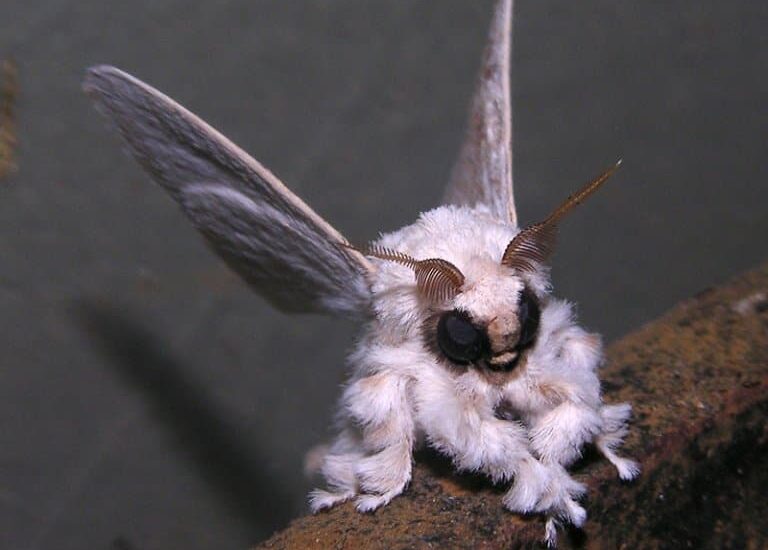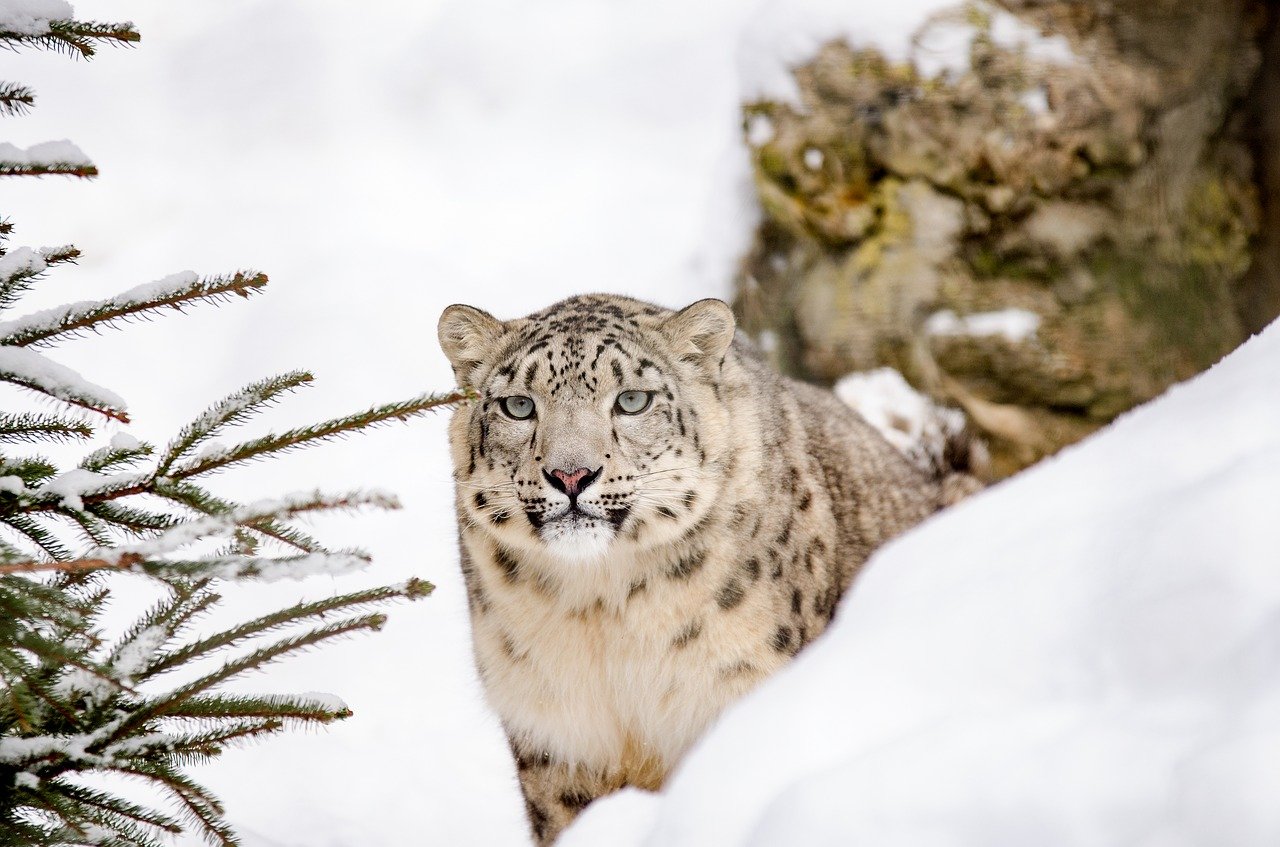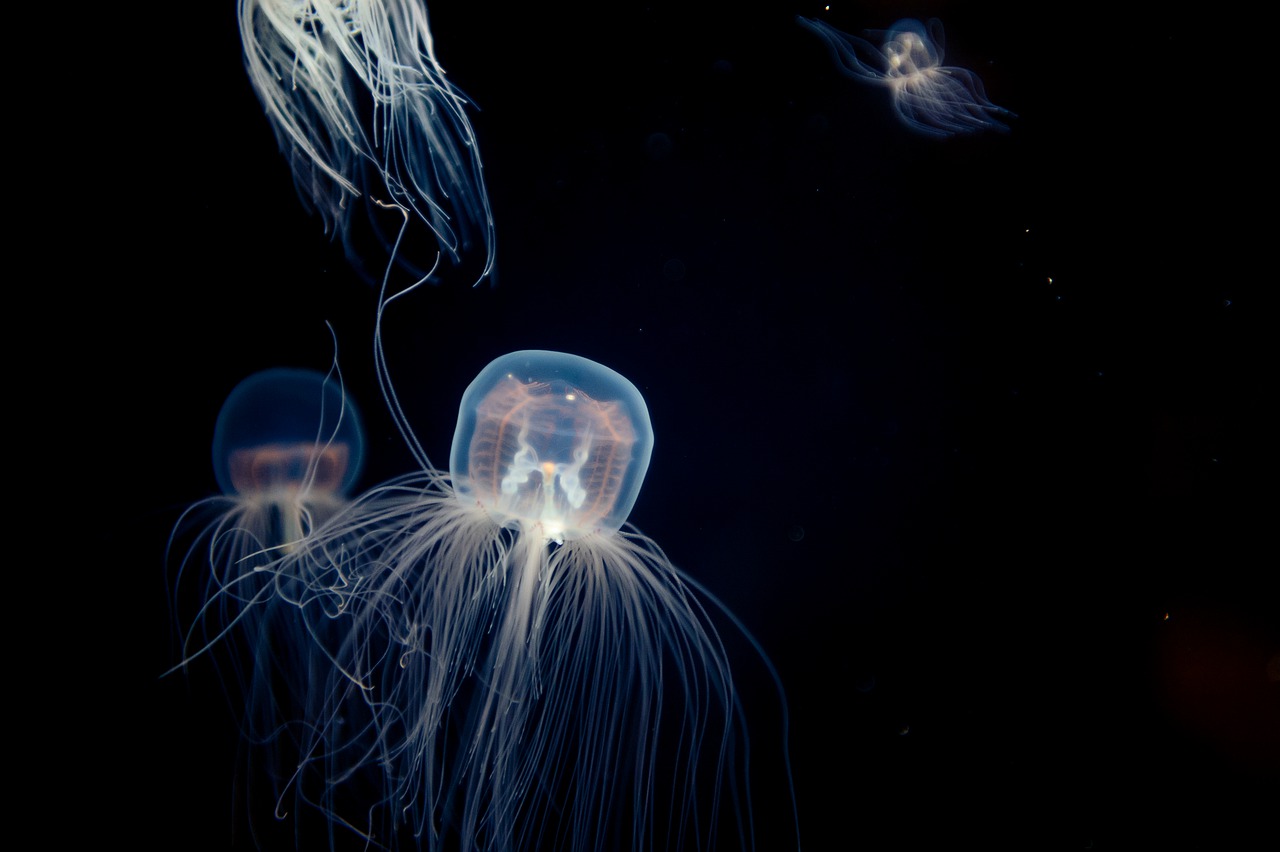As curious beings, our imaginations have no bounds when it comes to envisioning exotic forms of life. From extraterrestrial aliens to mythical centaurs, our creativity knows no limits, painting vivid pictures of the extraordinary. It fuels our legends, breathes life into our tales, and propels our sci-fi narratives. Yet, beneath the mysterious depths of our oceans and concealed within the lush rainforests and sprawling landscapes, an astonishing array of organisms thrives, defying even our wildest dreams. In the following, I’ll introduce you to five of the most peculiar inhabitants that share our planet, creatures so bizarre you’d hardly believe they’re real.
1. Sea Pigs (Scotoplane)
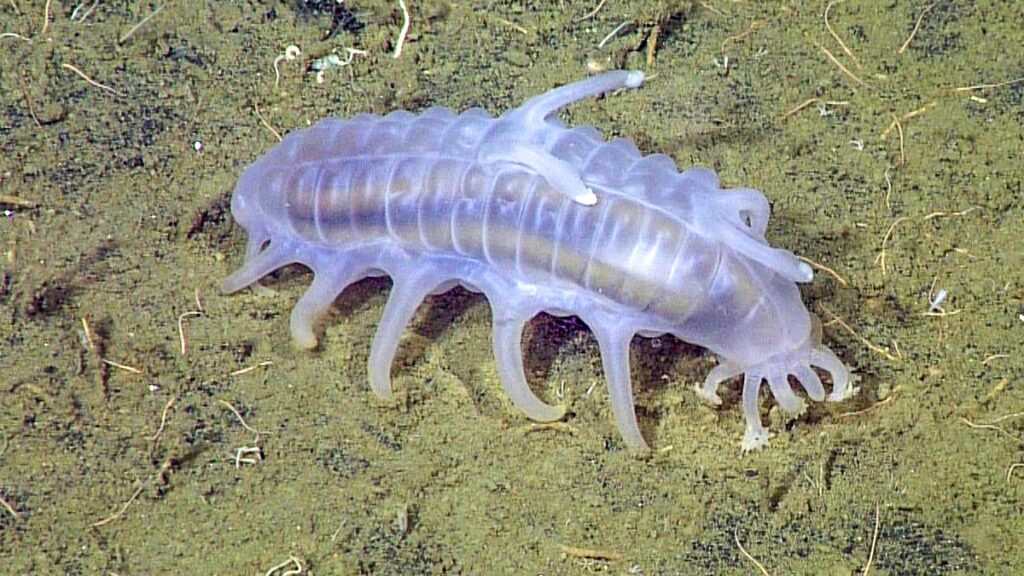
Photo by the Monterey Bay Smooth Ridge research site
Meet the enigmatic Scotoplane, these nearly transparent deep-sea denizens reside in the Abyssal zone, a realm tucked 3,000 to 6,000 meters below the ocean’s surface. With their otherworldly appearance, featuring peculiar pinkish appendages, these creatures can reach an impressive length of up to 17 cm (about 6.5 inches). As they gracefully traverse the abyssal plains, they sustain themselves by feasting on organic matter, employing their midfield tube feet to elegantly crawl across the ocean’s floor.
While these curious creatures are frequently encountered on the deep-sea bed, scientists find themselves continuously unravelling the mysteries that shroud them. One particularly intriguing riddle revolves around their tendency to occasionally offer rides to juvenile king crabs. The true nature of this behaviour remains cloaked in ambiguity, a phenomenon that adds to the mystique of these underwater ‘sea pigs’.
2. Black Swallower

Photo by: Dan Kitwood
When it comes to survival, many creatures tend to eat more than they need and store the extra for later – a habit not unlike our human tendency to say ‘just one more bite’ even when we’re full. But there’s one remarkable creature that may ease your guilt for indulging: the black Swallower, scientifically known as Chiasmodon niger.
This creature is quite the marvel as it can swallow prey much larger than itself, up to four times its own length and ten times its own weight. The largest recorded specimen of this species measures about 25 cm (10 inches) in length. You’ll find them in their natural habitat, which lies deep in the ocean, around 700 to 3,000 meters below the surface. Surprisingly, even in these depths, they are rarely spotted.
However, their voracious appetite can sometimes lead to their demise as they struggle to digest their enormous meals, and gases from decomposing fish build up in their bodies. To accommodate such massive feasts, they have evolved distended jaws and an elastic stomach, earning them the fitting title of the Black Swallower.
3. Okapi
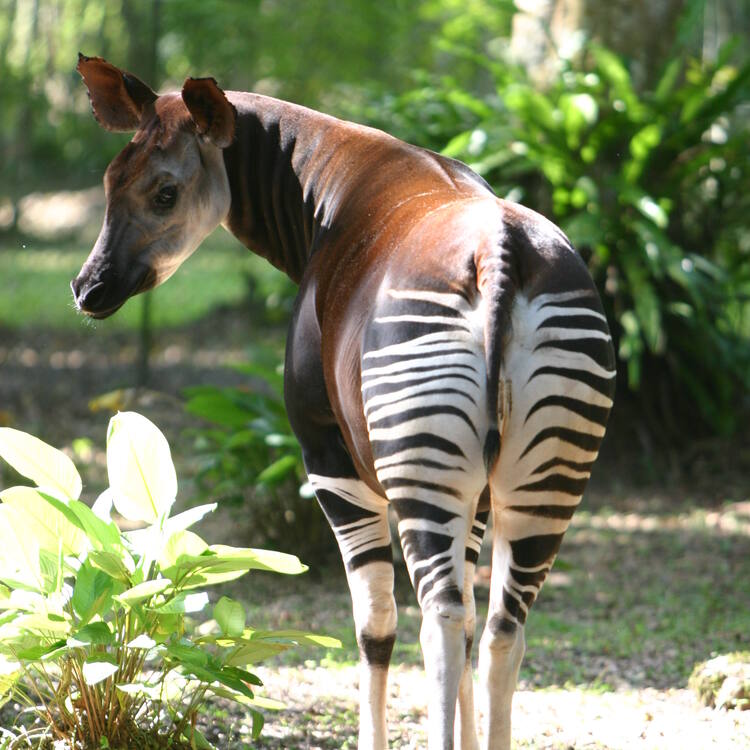
Photo by: Kim S. Gjerstad
Ever wondered what you’d get if you crossed a deer with a zebra? Meet the Okapi. This unique creature, despite being a distant relative of the giraffe, earns its spot on our list due to its distinctive appearance. Okapis are found in dense rainforests, sporting thick, oily fur with a reddish-brown coat and white stripes on their legs, reminiscent of zebras. These remarkable animals can weigh between 200 to 350 kilograms (440 to 770 pounds) and stand at heights ranging from 1.5 to 2 meters (4.9 to 6.6 feet).
To survive, Okapis use their long, dark tongues to reach high branches, sustaining themselves solely on vegetation. They communicate through infrasound, sounds too low for the human ear to detect, and are primarily active during the daytime. Despite their solitary and elusive nature, Okapis are classified as endangered due to habitat loss and being hunted for their meat and skin.
4. Lowland Streaked Tenrec
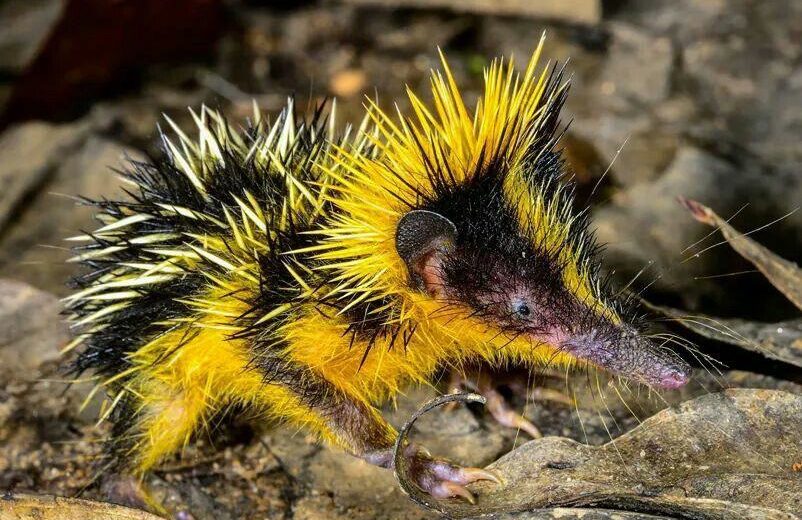
Image from: https://critter.science/the-lowland-streaked-tenrec/
Deep within the lush rainforests and tropical woodlands of Madagascar dwells a tiny marvel cloaked in black and yellow quills—the Lowland streaked tenrec, or scientifically known as Hemicentetes semispinosus. These pint-sized creatures weigh in at a mere 125 to 280 grams (4.41 to 9.87 oz) and measure around 140 mm (5.51 inches) in length. Under the moon’s gentle glow, they come alive, for the Lowland streaked tenrec is a creature of the night. Their diet consists mainly of worms, ants, termites, and other small invertebrates, while their conversations are held in high-pitched tunes.
Yet, much of our knowledge about these enigmatic creatures comes from studying them in captivity, as scientists endeavor to unravel the mysteries of Madagascar’s wildlife.
5. Venezuelan Poodle Moth
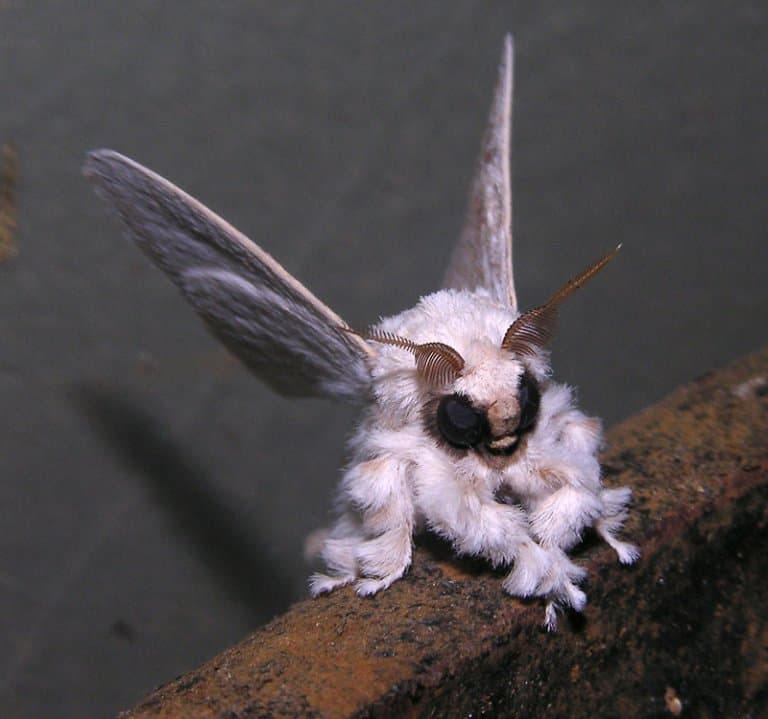
Photo from: https://critter.science/the-lowland-streaked-tenrec/
Remaining an intriguing mystery to scientists, the Venezuelan poodle moth, scientifically known as Artace cribraria, has captured attention for its unique appearance. This enigmatic insect first emerged onto the scene in 2009, sporting a striking white fluffy coat and distinctive black eyes. Its natural habitat lies in the high rock plateaus and lush forests of Venezuela, South America, with an estimated size ranging from 30 to 40 mm.
Scientists have tentatively placed the Venezuelan poodle moth within the Artace genus, primarily due to its resemblance to the Muslin moth. However, this charming creature remains shrouded in mystery and is relatively understudied. With environmental changes posing potential threats to its population, understanding and preserving this rare insect become increasingly crucial.
In our ceaseless pursuit of the extraordinary, we dream up fantastical beings, often drawing inspiration from the mysteries of the ocean depths and the secrets within lush forests. These wild domains house life forms that surpass even our wildest imaginations. As we explore the hidden corners of Earth, we cross paths with astonishing creatures that defy our expectations.
While we’re fortunate to share our planet with such extraordinary beings, it’s unfortunate that many of their homes are vanishing, and their populations are dwindling. This underscores the urgent need for conservation and sustainability, now more critical than ever. In the face of this wondrous diversity, our responsibility is clear: to champion conservation, safeguarding the remarkable creatures and environments that make our world extraordinary.
Sources:
“Black Swallower.” Twilight Zone. Woods Hole Oceanographic Institution. https://twilightzone.whoi.edu/explore-the-otz/creature-features/black-swallower/
Fact Animal. (2023). Venezuelan Poodle Moth. Fact Animal. https://factanimal.com/venezuelan-poodle-moth/
Monterey Bay Aquarium Research Institute. (n.d.). Sea Pig. https://www.mbari.org/animal/sea-pig/
National Geographic. (2023). Okapi. National Geographic. https://www.nationalgeographic.com/animals/mammals/facts/okapi
Our Breathing Planet. (2023.). Venezuelan Poodle Moth. Our Breathing Planet. https://www.ourbreathingplanet.com/venezuelan-poodle-moth/
University of Michigan Museum of Zoology. (n.d.). Hemicentetes semispinosus. Animal Diversity Web. https://animaldiversity.org/accounts/Hemicentetes_semispinosus/

